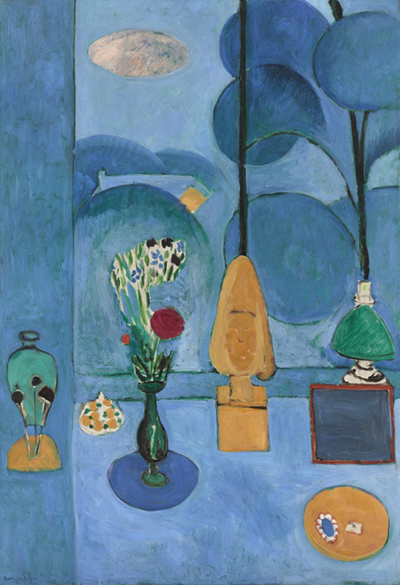An oil on canvas painting produced by Henri Matisse in 1913, The Blue Window is a subdued departure from the artist’s earlier, more colourful works. At this time, Matisse was beginning to gain recognition for his work.
Broadly conceived themes that allowed freedom of form and expression suited Matisse’s method of working.
Matisse was engaging with the cubist geometries of his contemporaries. A major reason for the beauty of The Blue Window is that all the elements of the painting have been carefully aligned and that every aspect of the composition has a relationship with each other. For example, the top of the ornament and the top of the lamp line up with the black rims of the window.
The framed square to the right of the composition is a tool known as a Claude mirror. Many artists used these to clarify their compositions, as it would remove the distraction of colour in a scene, therefore accentuating compositional elements.
This clarity has been achieved here in the form of structured vertical and horizontal bands and the cool blue palette that Matisse painted over other sheets of colour. As Matisse simplified forms in this way, he reinforced them by incising and scraping parts of the painting. The Blue Window is a view of the artist’s studio from his bedroom window. Matisse used this view twice in his 1913 work ‘Bell Flower’.
Although intellectually sophisticated, Matisse always emphasised the importance of instinct when producing art. He argued that colours, shapes, and lines should dictate how they might be employed in relation to one another and that an artist didn’t have complete over colour and form. He often enthused about his delight in abandoning himself to the forces of colour and design.




